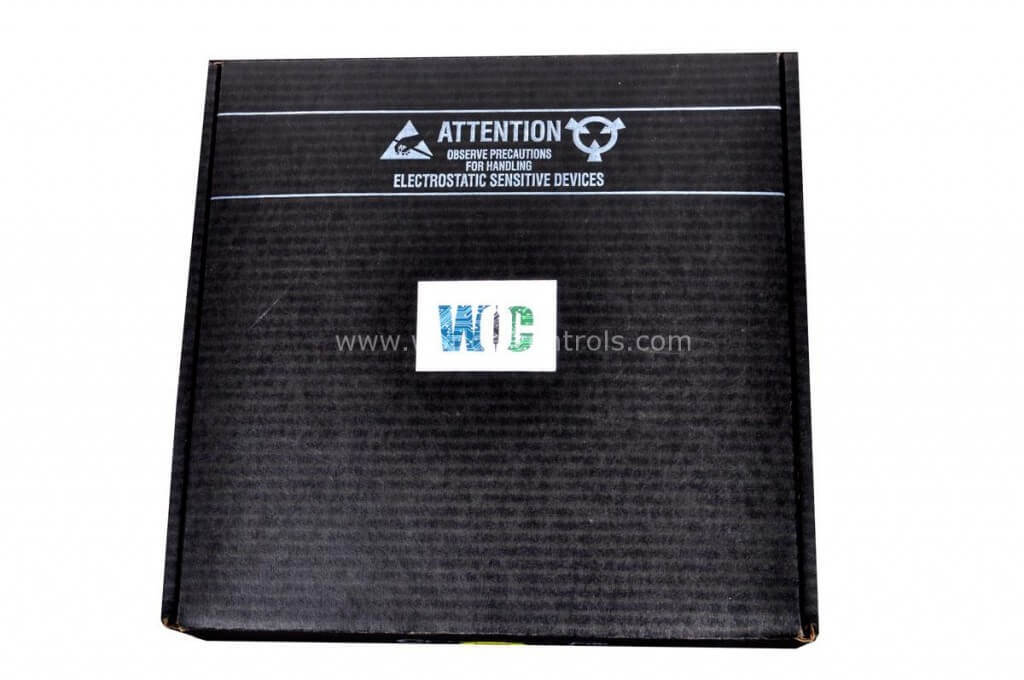SPECIFICATIONS
Part No.: IS200TREAH2A
Manufacturer: General Electric
Country of Manufacture: United States of America (USA)
Size: 33.0 cm high x 17.8 cm, wide
Technology: Surface mount
Temperature: -30 to 65oC
Product Type: Turbine Emergency Trip Terminal Board
Availability: In Stock
Series: Mark VIe
Functional Description
IS200TREAH2A is a Turbine Emergency Trip Terminal Board developed by GE. It is a part of Mark VIe control system. The turbine emergency trip terminal board, is an integral component within the Mark VIe system, specifically designed to collaborate with PPRO turbine I/O packs.
Features
- Customer Input Terminals: Accessible through two 24-point pluggable barrier terminal blocks (H1A, H2A) or 48 pluggable Euro-style box terminals (H3A, H4A), these terminals facilitate customer inputs.
- Passive Pulse Rate Devices: Nine passive pulse rate devices, distributed across three per X/Y/Z section, are employed to sense a toothed wheel, effectively measuring the turbine speed.
- Jumper Blocks: These blocks enable the fanning of one set of three speed inputs to all three PPRO I/O packs, ensuring synchronization and redundancy.
- Output Contacts: Two sets of output contacts are provided: one set operating at 24 V dc (H1A, H3A), and the other at 125 V dc (H2A, H4A), offering TMR voted output contacts to trip the system in case of emergencies.
- Voltage Detection Circuits: Four circuits designed for 24-125 V dc voltage detection are incorporated to monitor the trip string, ensuring system integrity and safety.
- Daughterboard Connectors: Additional expansion capabilities are facilitated through daughterboard connectors, offering the potential for optional feature expansion as required.
Voltage Monitors
- The trip relays integrated into the board offer flexible placement within a trip string, allowing them to be positioned anywhere along the circuit. To facilitate monitoring and ensure system integrity, incorporates three general-purpose isolated voltage sensor inputs. These inputs serve the purpose of monitoring various points within the trip system and transmitting voltage status information to the system controller, enabling appropriate action to be taken as needed.
- Common applications for these voltage sensor inputs include:
- Power Supply Voltage Monitoring (PWR): One typical use is to sense the power supply voltage for the two trip strings. Monitoring the voltage levels ensures that the power supply remains within acceptable ranges, crucial for the reliable operation of the trip system.
- Solenoid Voltage Monitoring (SOL1, SOL2): Another common application is to monitor the solenoid voltage of the device being controlled by the relays. By monitoring solenoid voltage, the system can ensure that the correct voltage levels are being applied to activate the devices effectively.
- While the board symbol may suggest these specific applications, it's important to note that the sensors are versatile and can be applied to various scenarios based on the specific requirements of the application. This flexibility allows for optimal utilization of the voltage sensor inputs to meet the unique needs of the trip system.
Trip Relays
- The trip relays incorporated into the TREA board are constructed using sets of six individual form devices arranged in a specific voting pattern. In this pattern, if any two controllers simultaneously vote to close a relay, it establishes a conduction path through the set, activating the relay. This design ensures redundancy and reliability in tripping operations.
- Given the critical nature of trip relay functionality, it's imperative to detect any instances of relay shorting promptly to maintain tripping reliability. To achieve this, a sensing circuit is applied to each set of relays. When the relays are commanded to open, and voltage remains present across them, the sensing circuit detects if one or more relays are shorted. If a shorted relay is detected, the circuit generates a signal that is sent to the associated PPRO I/O pack, triggering an alarm to alert operators of the issue.
- To prevent false indications, especially in scenarios where one PPRO I/O pack votes to close a relay while the other two vote to open, the TREA sensing circuit employs inputs from all three packs. This comprehensive approach ensures accurate detection of relay status, even in complex voting scenarios, enhancing the reliability and integrity of the trip system. The voting arrangement and sensing circuitry are illustrated in the TREA symbol, providing a clear representation of the system's functionality.
The WOC team is always available to help you with your Mark VIe requirements. For more information, please contact WOC.
Frequently Asked Questions
What is IS200TREAH2A?
It is a Turbine Emergency Trip Terminal Board developed by GE under the Mark VIe series.
What is the purpose of jumpers JP1 and JP2 on the board?
Jumpers JP1 and JP2 facilitate the fanning of speed inputs between different sections of the TMR system. Placing the jumper over the pin pairs enables the fanning of the speed input from one section to another, enhancing synchronization and coordination.
How are trip relays configured on the board?
The trip relays on the board consist of sets of six individual form devices arranged in a voting pattern. Any two controllers that vote to close establish a conduction path through the set. Additionally, sensing circuits detect shorted relays when commanded to open, ensuring reliability and safety.
What are the voltage monitor inputs used for on the board?
The voltage monitor inputs serve to monitor various points in the trip system, such as power supply voltage and solenoid voltage. These inputs provide valuable data to the system controller, enabling appropriate actions to be taken based on voltage status.
